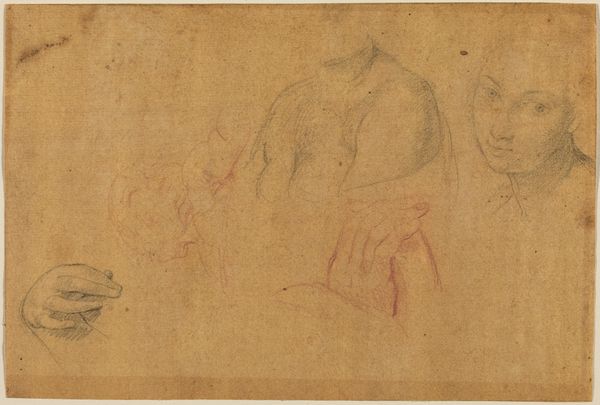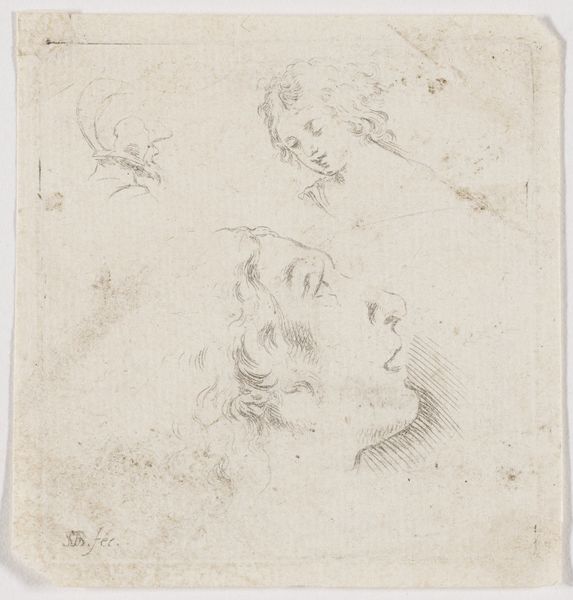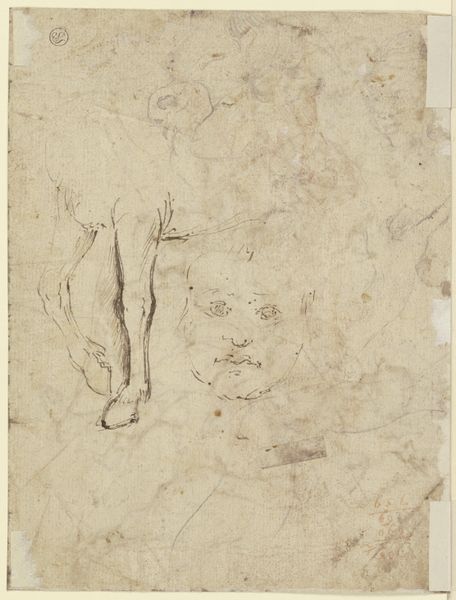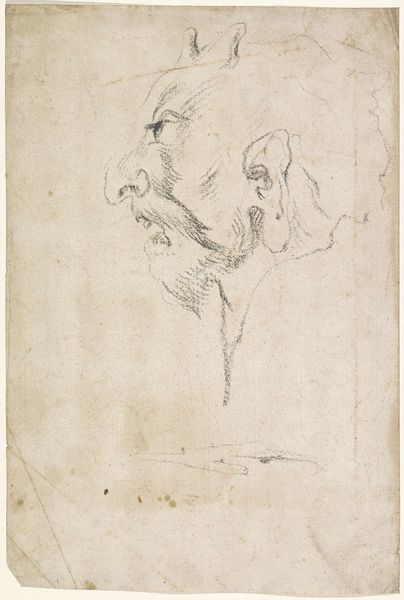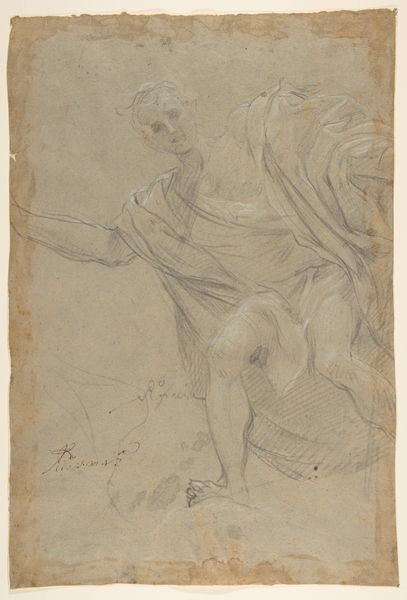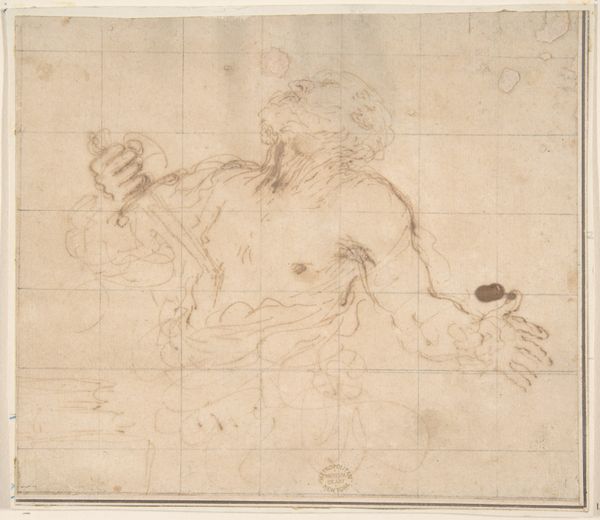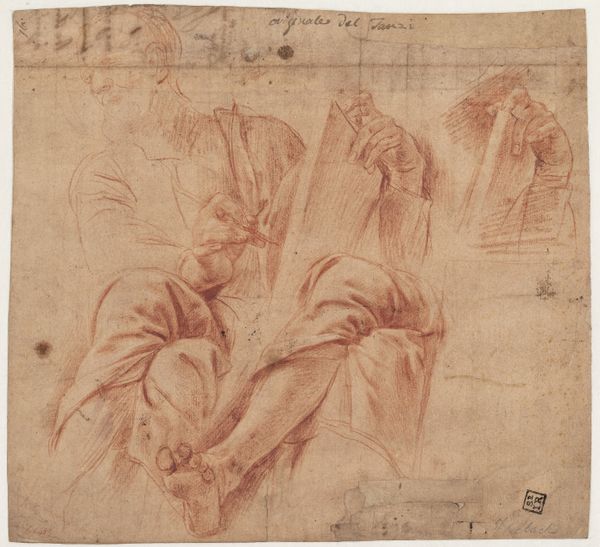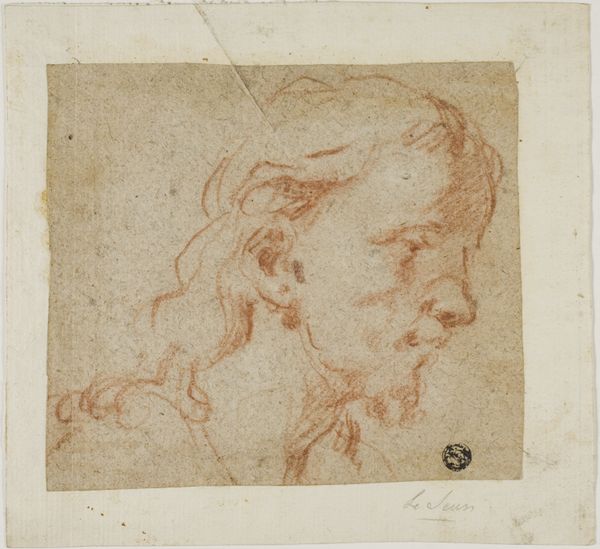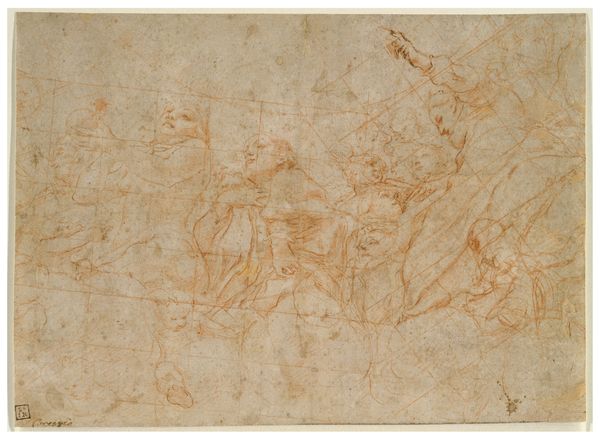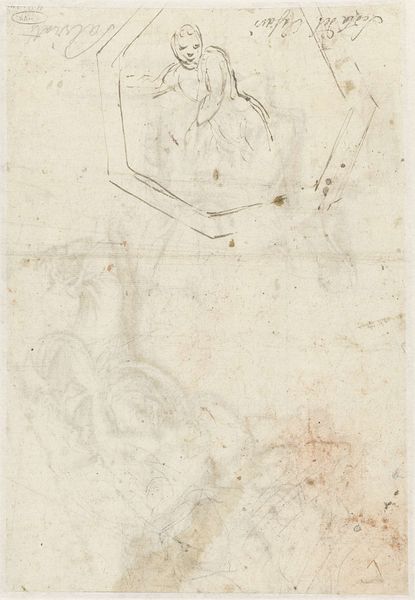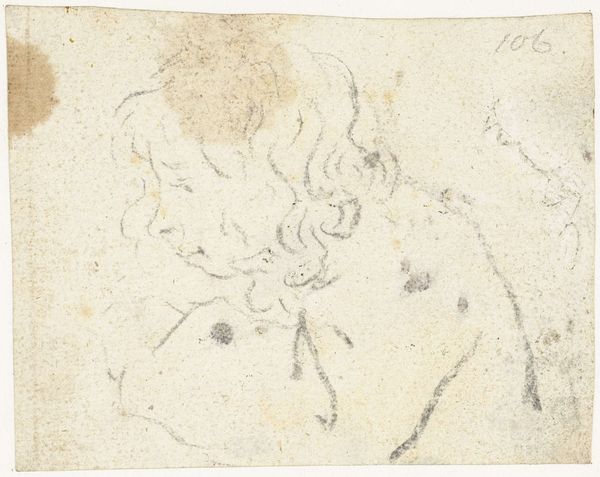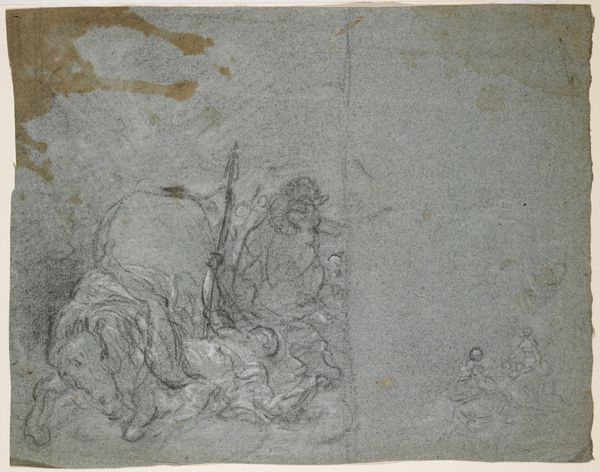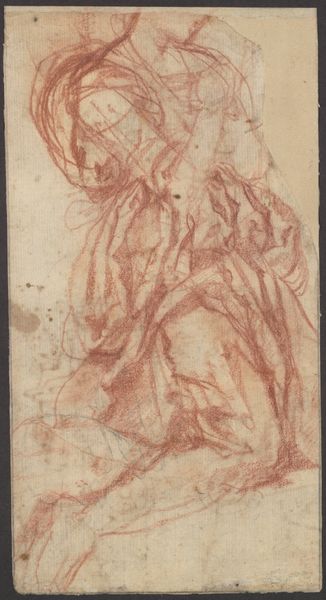
Brystbillede af en turbanklædt, skægget mand, en face, samt studie af en hånd 1575 - 1635
0:00
0:00
drawing, pen
#
portrait
#
drawing
#
11_renaissance
#
pen
Dimensions: 235 mm (height) x 255 mm (width) (bladmaal)
Editor: This is *Brystbillede af en turbanklædt, skægget mand, en face, samt studie af en hånd*, a pen drawing from sometime between 1575 and 1635, by Tanzio da Varallo. I'm struck by the way the hand juts out; it almost feels like the figure is reaching out of the frame. What catches your eye? Curator: The turban immediately tells a story. In Renaissance art, turbans were frequently used, not always accurately, to signify the Orient, carrying connotations of wisdom, exoticism, but sometimes otherness and even menace. Think about the complex cultural exchange happening during this period and the limited understanding of "the other". Editor: So, the turban isn’t necessarily a reflection of reality? Curator: Perhaps, but consider how dress becomes symbolic, acting as a potent signifier even when divorced from its original context. What does that extended hand holding? Is it a gesture of power, a plea, a blessing? Its ambiguity allows the viewer to project meaning. The beard is significant too; a common symbol of wisdom. Editor: I didn’t even consider the hand like that. I suppose it could mean many things, especially coupled with the face. Curator: Exactly. The lack of a clear narrative allows the symbols to work on our subconscious. It becomes about interpreting cultural memory, these collective understandings of image. Editor: That's really fascinating. It makes me think differently about how artists use familiar images to evoke complex ideas. Curator: Precisely. Images speak across centuries.
Comments
No comments
Be the first to comment and join the conversation on the ultimate creative platform.
